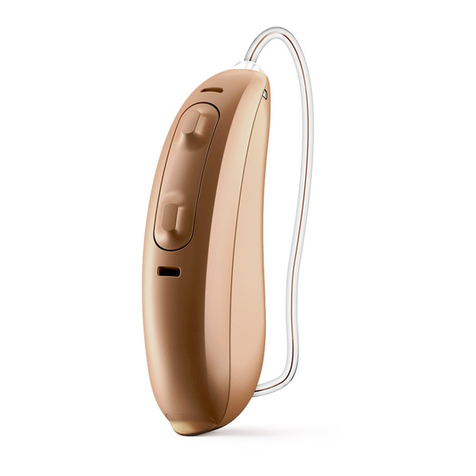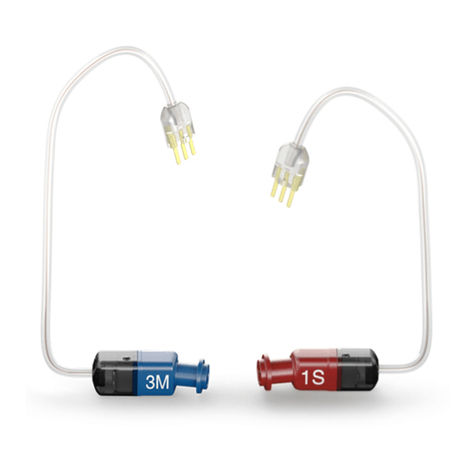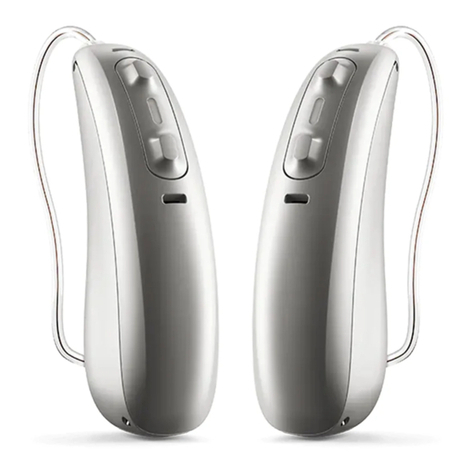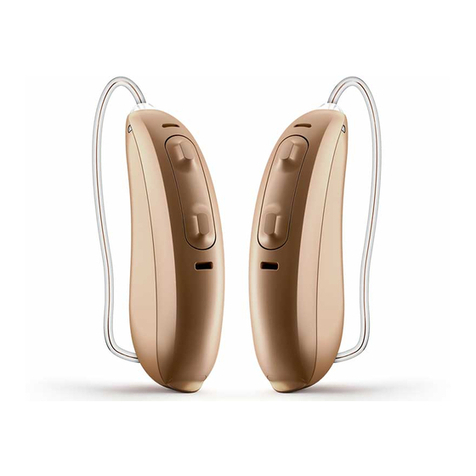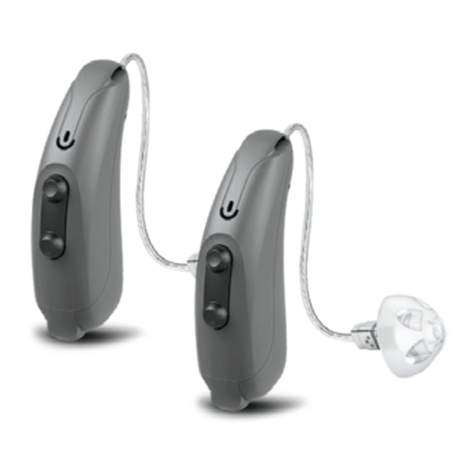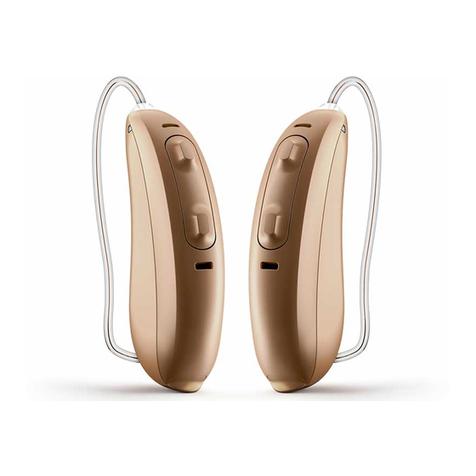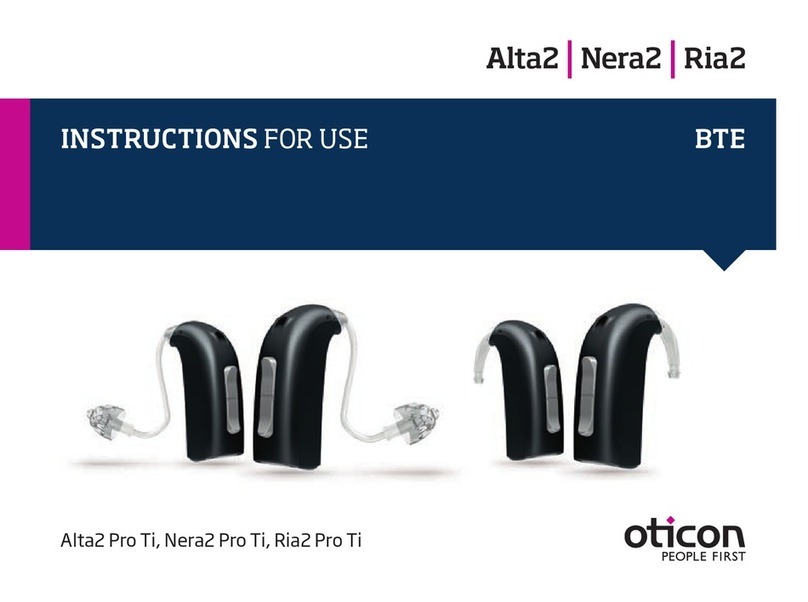
7
Introduction .................................4
Description of the hearing instruments ............8
Getting started ..............................10
On/Off function .............................10
Delayed Start ...............................10
Inserting/Replacing the battery .................10
Low battery indicator .........................11
Sports lock.................................12
Inserting/removing hearing instruments ..........12
Program and Multi-Function buttons.............14
Flight mode ................................17
Telephone use ..............................18
Listen to radio or TV..........................19
Cellular phones .............................19
Auto Phone Detection ........................19
Telecoil ....................................21
Tele-loop systems ...........................22
Direct audio input (optional) ...................22
Connecting/Disconnecting audio boots ..........22
Care and maintenance........................23
Daily maintenance ...........................24
The receiver tube ...........................25
Cleaning the receiver tubes and domes ..........25
Cleaning RIE molds ..........................25
Changing wax guard for receiver tube ...........26
How to apply domes .........................27
Using Kirkland Signature hearing instruments
with smart phone apps .......................28
General precautions..........................38
General warnings............................29
Battery warning Information....................30
Hearing instrument expectations................31
Important notice for prospective hearing aid users..31
Children with hearing loss .....................32
Warning to hearing aid dispensers ..............33
Troubleshooting guide ........................34
Technical data ..............................38
Warranty and repairs .........................42
Temperature test, transport
and storage information.......................42
Contents
400146240-CA_rA KS RIE ug.indd 7 31-07-2013 13:31:03
